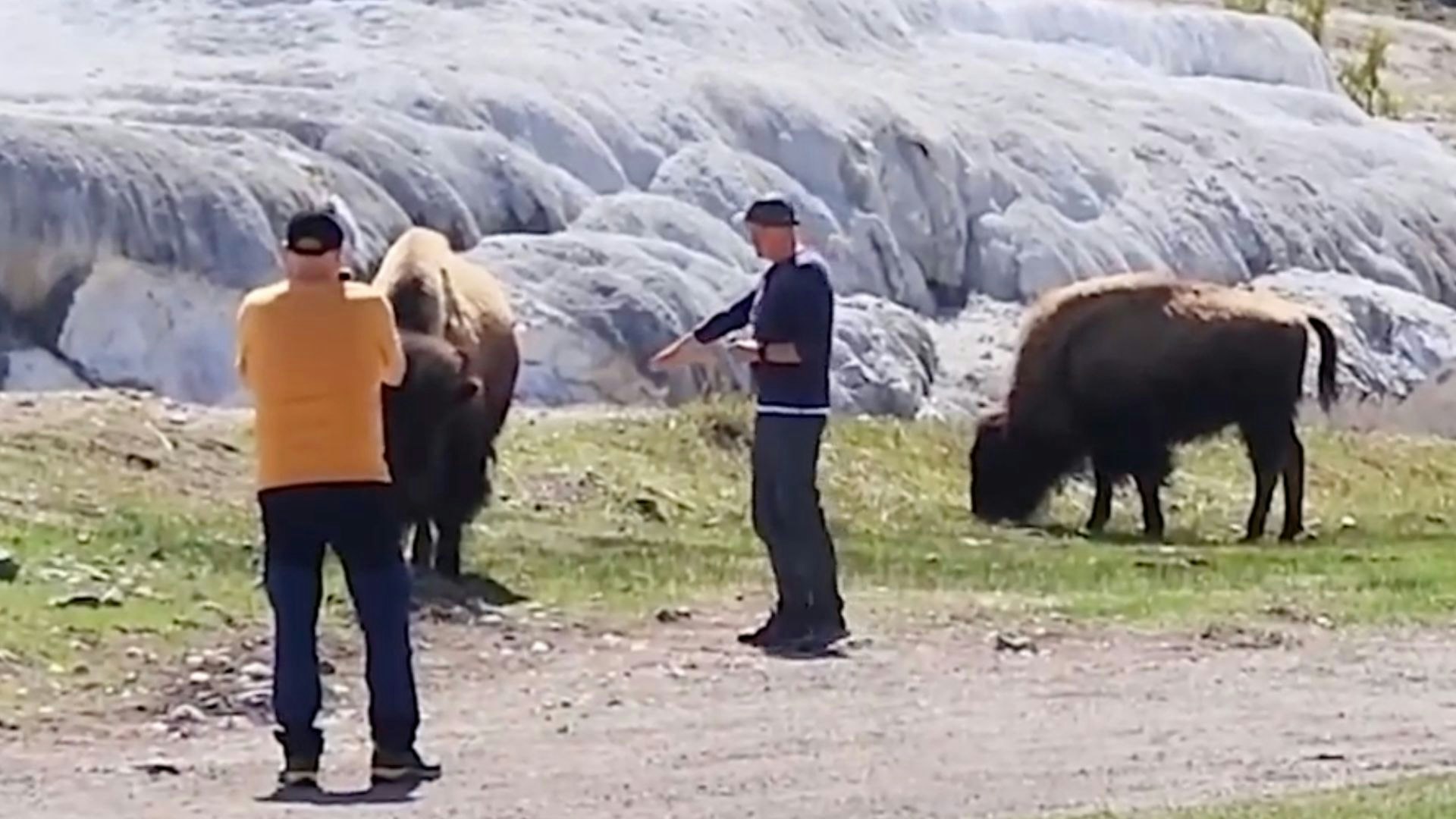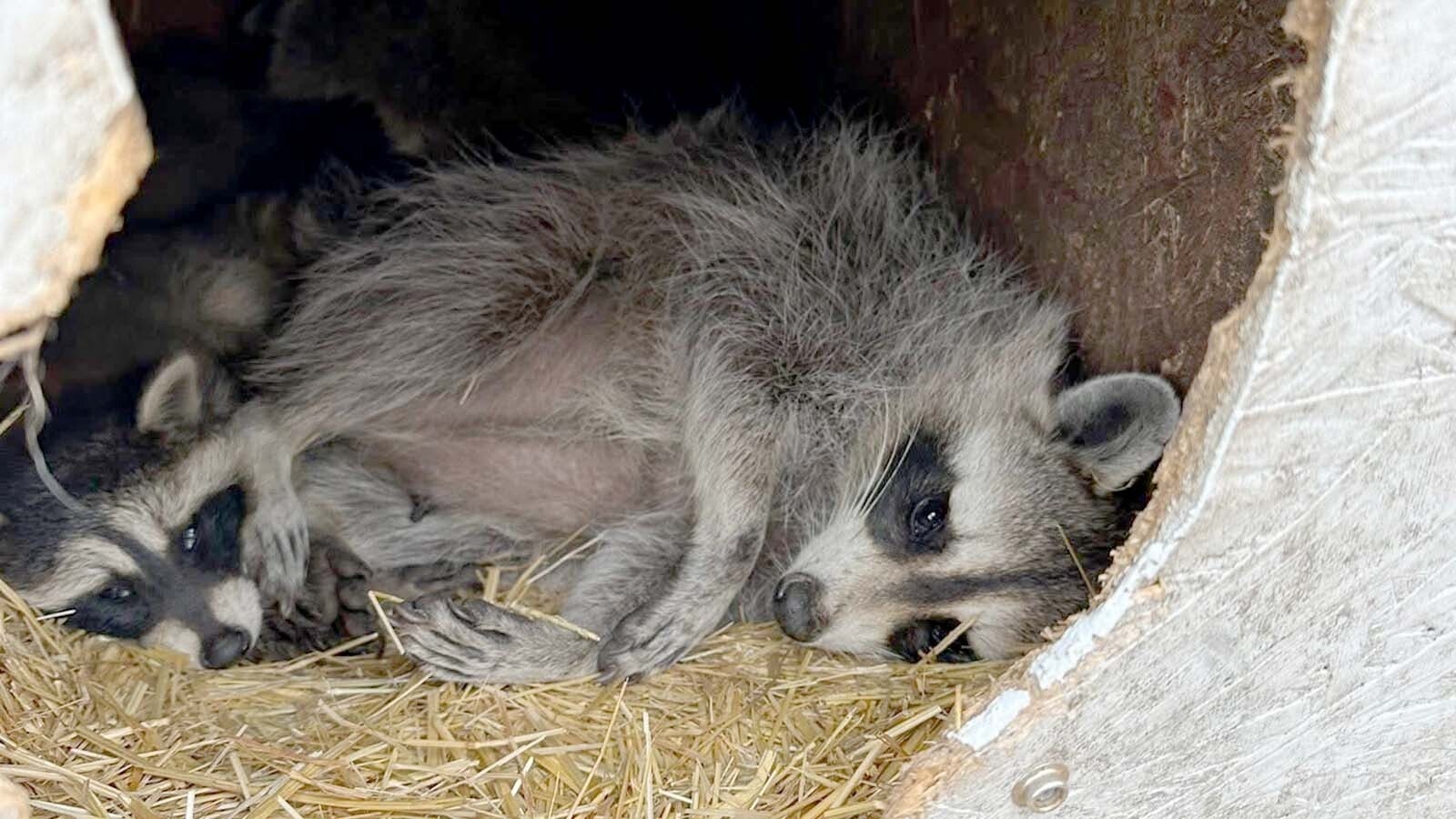Let the stupidity begin.
Every year, Yellowstone National Park rangers respond to visitors who get a little too close to wildlife that roam free in America’s first national park.
Less than a week after opening its gates to visitors for the 2023 season, a nurse visiting the park documented two men trying to touch a bison.
“Oh, my god — is he serious?” she asks in the video while watching two men getting up close and personal to a pair of the seemingly docile creatures. “Dude, that thing will kill you!”
An encounter like this is just one of many reported to park staff each summer.
Ranger Rich Jehle told Cowboy State Daily that despite obvious and pointed literature, signage, person-to-person conversations and a growing library of photos and video available online showing just what not to do with Yellowstone’s giant fluffy cows, there are always a few who just can’t seem to help themselves.
“I've seen a lot of visitors interacting with wildlife in ways that are probably not safe,” said Jehle.
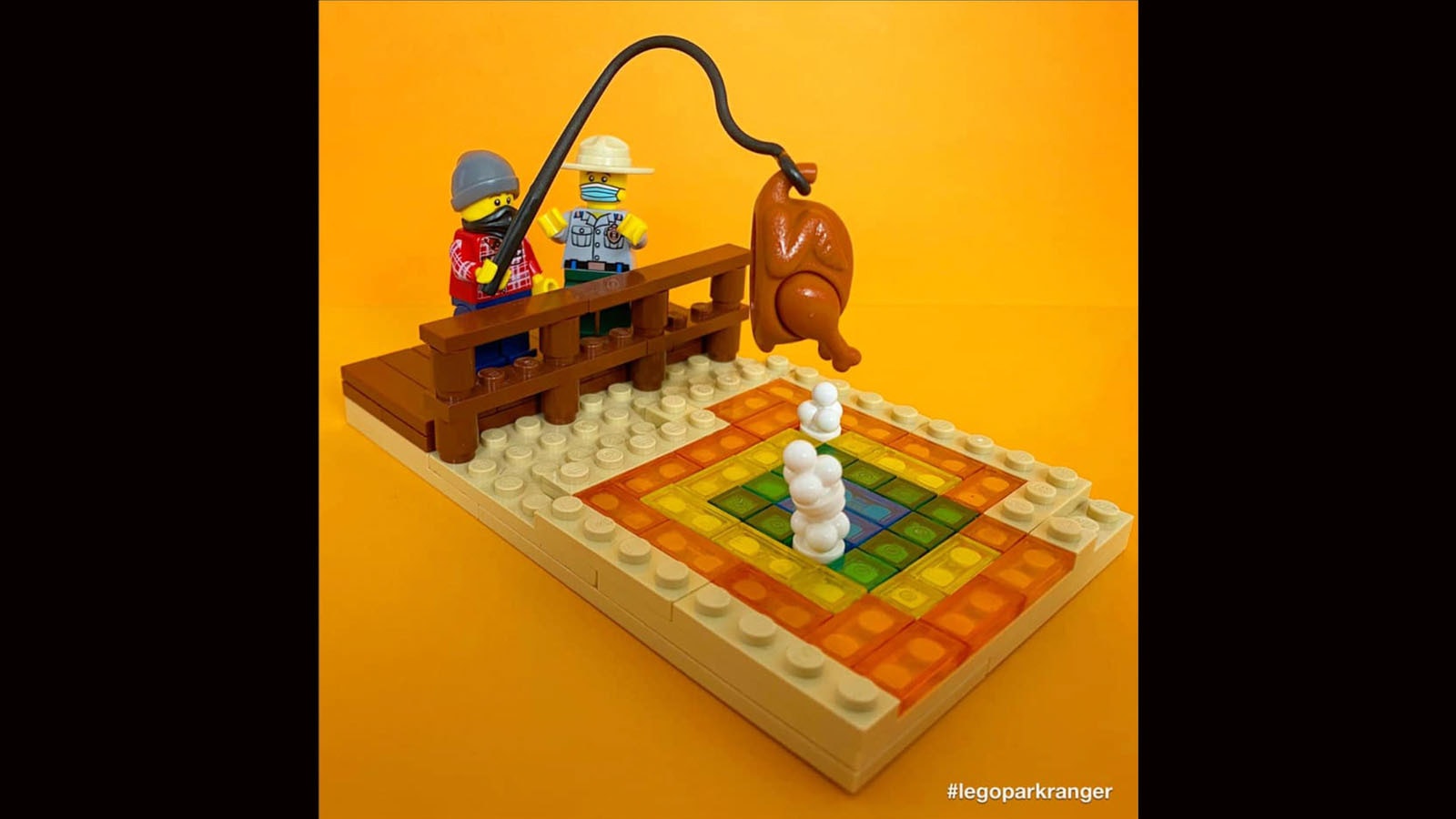
Exhibit A
A man from Idaho in November 2020 was banned from the park when he tried to cook a chicken in the hot springs — and it wasn’t the first or only time someone’s tried to use the superheated waters that can get close to 200 degrees to make dinner.
Just a couple months earlier three men were banned from the park for two years and had to pay fines when a park rangers stumbled across them trying to boil a pair of chickens in burlap sacks in a hot spring.
The November incident inspired the park to remind visitors via Legos that there are many ways to cook a Thanskgiving turkey, but a hot springs isn’t one of them.
Educating Visitors
Jehle has worked in Yellowstone National Park for 31 years and is the park’s West District Supervisor for the resource, education and youth programs division.
“We run the visitor centers at Madison, West Yellowstone and Old Faithful,” said Jehle. “We provide ranger-led programs and the educational aspect of the park.”
But he said people ignoring the rules to approach or take selfies with wildlife is a daily occurrence, and he or one of his fellow park staffers has to intervene situations that could become dangerous.
“We see visitors getting too close to bison or elk on a daily basis,” said Jehle. “And oftentimes, it's not so much something where we have to call into our dispatcher and say send somebody out to help – it's more like we roll down the window and say, ‘Sir, you need to move back away from that animal, because you're too close.’ That happens with some regularity.”
Jehle said he and his fellow rangers do their best to educate visitors about the features that are so special about Yellowstone, from the geological formations and features to the wildlife.
“Really, I'm an advocate for visitors, because Yellowstone is set aside for visitors to enjoy,” he said.

Exhibit B
There are many examples of people getting too up-close-and-personal with bison.
A woman from Ohio was gored about this time last year and flipped 10 feet into the air after getting too close to a Yellowstone bison.
As the animal was walking past a boardwalk at Black Sands Basin just north of Old Faithful, the woman approached it. Wrong move. The bison gored her, then tossed her.
An elderly woman from California was gored in 2020 when she approached a bison and tried to get a photograph of it.
Those are mounting examples of how messing with a temperamental beast that weighs up to a ton and has a hair-trigger can go wrong, like the Iowa woman in 2020 who was de-pantsed by a bison in Custer State Park in South Dakota.
Foreign Experience
Jehle said he can see why some visitors get caught up in the moment when they are face-to-face with creatures they’ve only ever seen in pictures.
Overall, “99% of visitors that come to Yellowstone are not here with some sort of bad intent,” he said. “It's mostly because this is such a foreign experience, and in such a foreign environment compared to where most visitors to Yellowstone come from.”
Jehle said he can understand how people who don’t live around wildlife every day can be lulled into a false sense of security, watching a bison lounging on the side of the road or quietly munching greenery near a geyser basin.
“They're not familiar with how to behave around wildlife,” he said, “and they often mistake what a wild animal does in its natural environment. Basically, they're mistaking tolerance for being tame.”
Jehle said he and his fellow rangers do their best to stress to visitors that the animals that live in Yellowstone are truly wild animals.
“This is not a zoo, they are not tame, they're not like domestic cattle or domestic farm animals, although they can appear that way,” he said.
Distance = Safety
Bison move slowly because they’re conserving their energy, said Jehle. But should they feel provoked for any reason, a 2,000-pound bison can move very, very quickly in the time it takes to snap your fingers.
“Each individual animal is different,” said Jehle. “But just like you or me, they have their own personal bubble of space around them. And if you violate that personal space that they have, they can become very aggressive very quickly.
“And I'll tell you what – a bull bison that weighs 2,000 pounds that becomes aggressive toward you can kill or injure you easily and quickly.”
That’s why distance equals safety, Jehle said.
“Twenty-five yards is a good benchmark for most of the large mammals in the park,” he said. “If you give them plenty of space, and respect that space, you're not going to have a problem with them, and they're not going to become aggressive.”
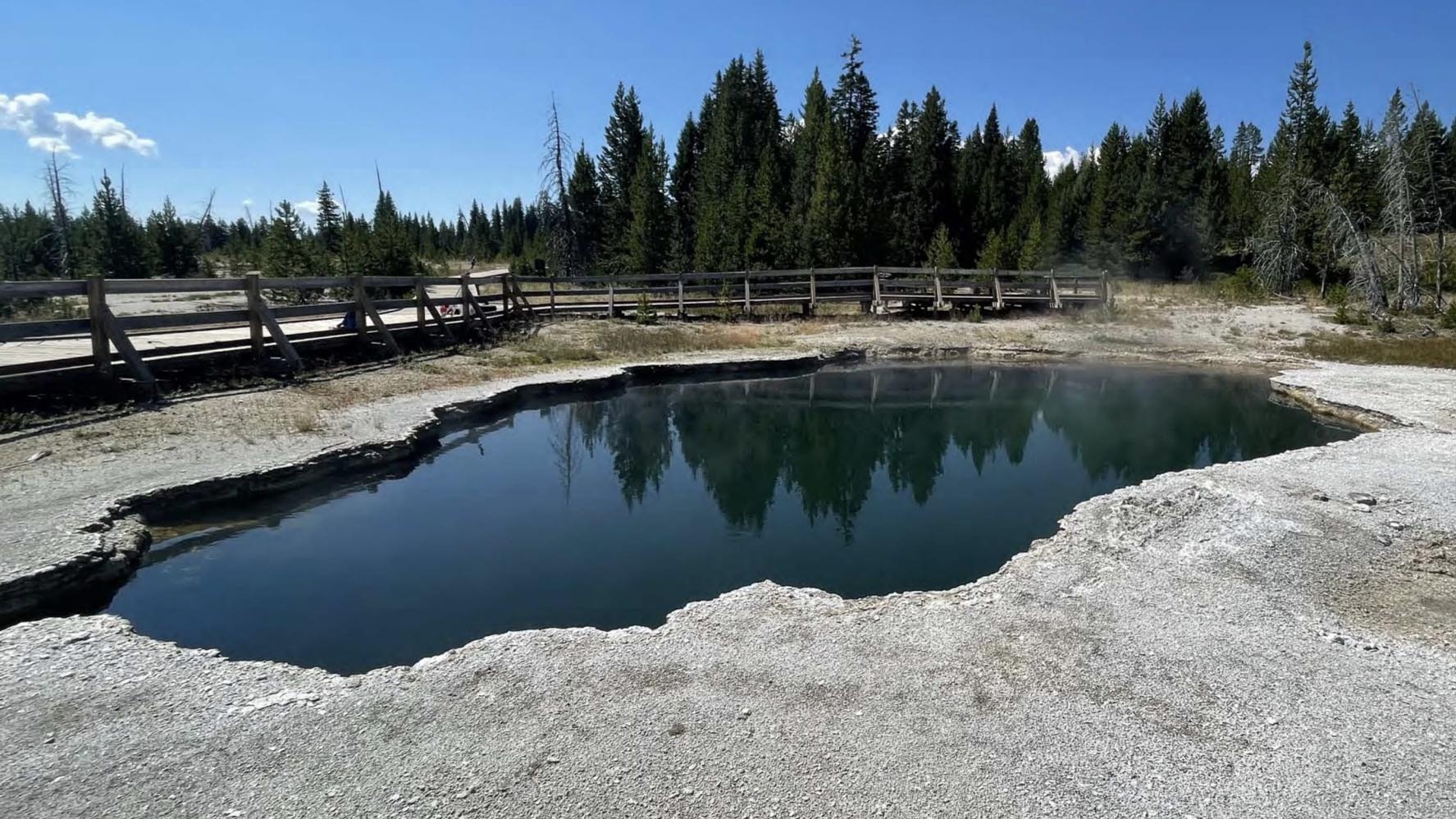
Exhibit C
While most stupid human interactions at Yellowstone involve wildlife, some don’t need animals to show their visitor IQ isn’t above single digits.
That describes the Colorado man who in 2018 was caught getting too up close and personal with the famous Old Faithful geyser. He stuck his head over the geyser — it wasn’t erupting at the time — risking having his face melted by its 200-degree water had it decided to spout off.
But that wasn’t the worst of it. Seems the man also peed into the cone of Old Faithful and also was discovered on video surveillance bathing his feet in Beryl Spring, one of the hottest at the park.
As a Los Angeles man demonstrated last summer, the pools in Yellowstone National Park aren’t only just hot, they’re corrosive. The man was practically dissolved in the Abyss Pool in the West Thumb Geyser Basin.
Only a foot, still in its shoe, was found.
Bison Aren’t The Only Dangerous Critters
Jehle pointed out that although we often hear about people getting too close to bison, other animals can be just as dangerous.
Park officials this week sent out a notice that elk calving season has begun in Yellowstone National Park, and warn that cow elk are very protective of their young.
“Elk that are having young of the year can be very aggressive,” said Jehle.
In fact, cow elk have been known to run towards unsuspecting visitors, often without even being provoked.
“Look around corners before exiting buildings or walking around blind spots,” officials warn. “Cow elk may bed their calves near buildings and under cars. If an elk runs toward you, find shelter in your vehicle or behind a tall, sturdy barrier as quickly as possible.”
Rare Occurrences
Jehle finds it quite remarkable that in his 31 years in Yellowstone, there haven’t been more incidents of visitors being injured by wildlife.
“We often see these really dramatic videos of visitors being charged by a bison, or being even injured by a bison,” he said. “But the remarkable thing is that it doesn't happen more frequently here – because people approach wildlife too closely in this park during the busy summer months every day.
“And the number of reported incidents that we hear about, or we see, are relatively small, but they garnish a lot of attention.”
Jehle himself has only witnessed a couple of incidents in which humans and bison got a little too close, and the situation could have gotten out of hand. In one particular incident, a bison decided that a snowcoach was in his way.
“I can remember specifically, coming around the corner on my snowmobile and I’m by myself, and probably a couple hundred yards up ahead, I see a snowcoach stopped in the road, basically surrounded by bison,” he said. “And the visitors, they're taking pictures and having a great time, and they're safe, they're inside the snowcoach.
“But then, one or two of the big bulls just started bucking and jumping around, and then one of them just turned around and slammed the side of the snowcoach, just slammed their head right into it.
“So again, that just stresses to me that wild animals are unpredictable, and you want to give them plenty of space, and you'll be fine.”
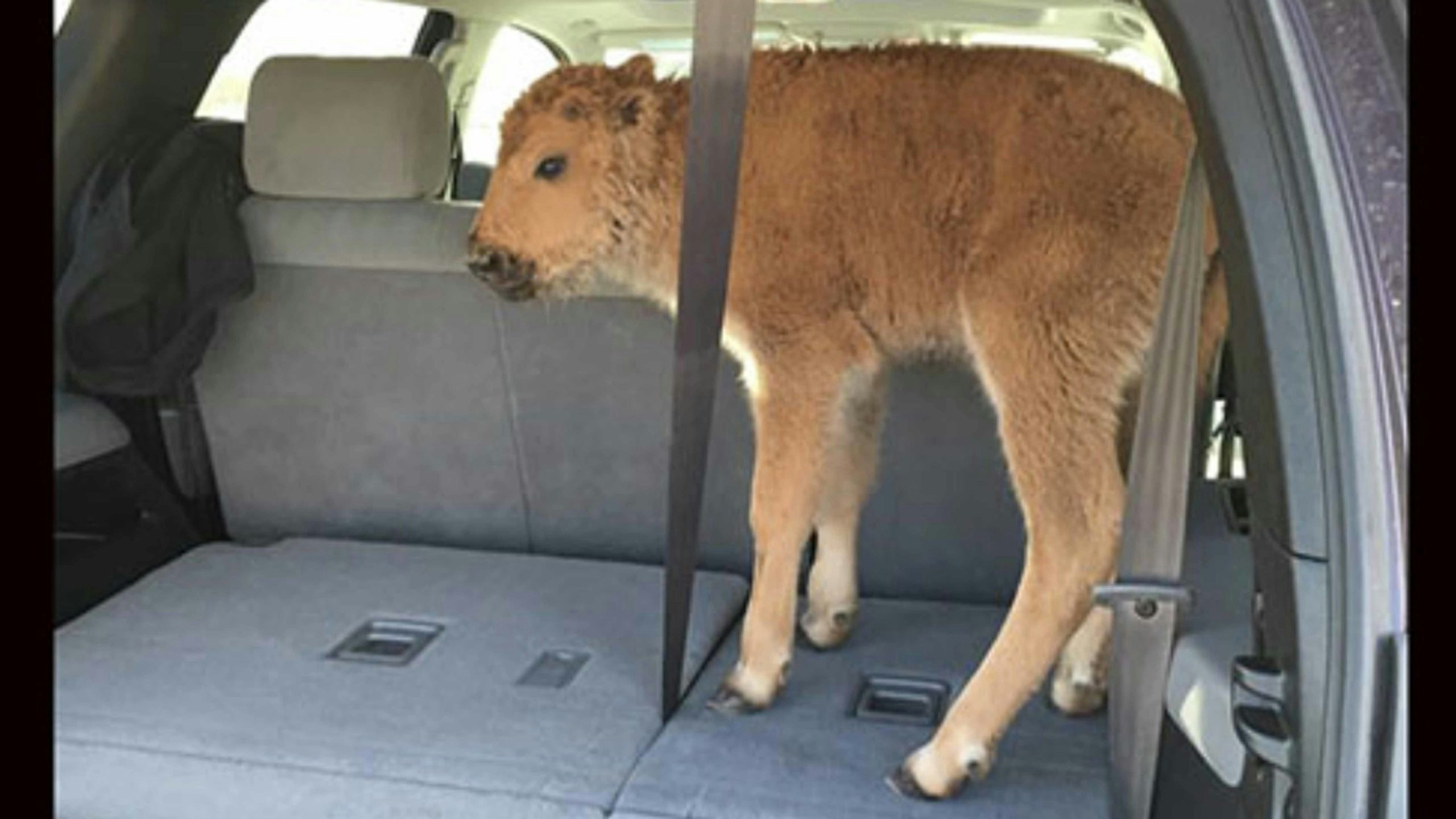
We Rest Our Case
While those other encounters leave most shaking their heads, this one still drops some jaws.
It was seven years ago in 2016 when a bison calf wasn’t only approached by a pair of Yellowstone tourists, it was calf-knapped.
The visitors put the baby bison in the back of their minivan because they thought it looked cold.
They took it to a ranger station for “help,” but it turns out the only thing the animal needed rescuing from was the tourists.
The calf was euthanized a short time later because its mother rejected him after the human interaction.
You Can Lead A Horse To Water …
Jehle said no matter how many rangers are patrolling or how many flyers they distribute, there’s no way for park staff to mitigate every circumstance in which people put themselves at risk.
“We try to educate visitors when we speak to them in visitor centers, we certainly have safety information on the Park website, if people look at that ahead of time about how to stay safe around wildlife,” he said. “We have published materials that we hand out at the entrance stations.
“But the bottom line is, if you give somebody a park newspaper at the entrance station, that doesn't mean they're going to read it. Or if they read it, that they're going to follow the guidelines.”
And he supports the idea of informed visitors cautioning others if they catch them in an unsafe situation… but only to a point.
“I don't think there's anything wrong if a visitor sees another visitor putting themselves in a situation that's dangerous, to vocalize that,” said Jehle. “But I do think people need to be aware that, just because you talk to another visitor, they may not want to hear what you have to say, or they may take offense at it – and you want to not push that envelope to the point where you're getting in some sort of confrontation with somebody else. That's just not worth it.”
Enjoy Yellowstone — Safely
Jehle said he absolutely loves where he lives and works – and said that he feels it is his responsibility, and the responsibility of his fellow rangers, to provide Yellowstone’s wildlife the space they need to survive.
“I just took a nice drive out in the park last night with my wife, and we found a nice big pullout along the Madison River and watched a herd of bison with their young of the year from a couple hundred yards away,” he said. “And it was great. You could hear frogs vocalizing, and Canada geese flying by and moving through this meadow, and it was beautiful. There's plenty of space. We were a long ways off, but had a great view, and they weren't bothered.”
Jehle’s best advice for tourists is that they can still get great pictures without approaching animals too closely or putting their own safety at risk.
“It's not difficult to do,” he said.

